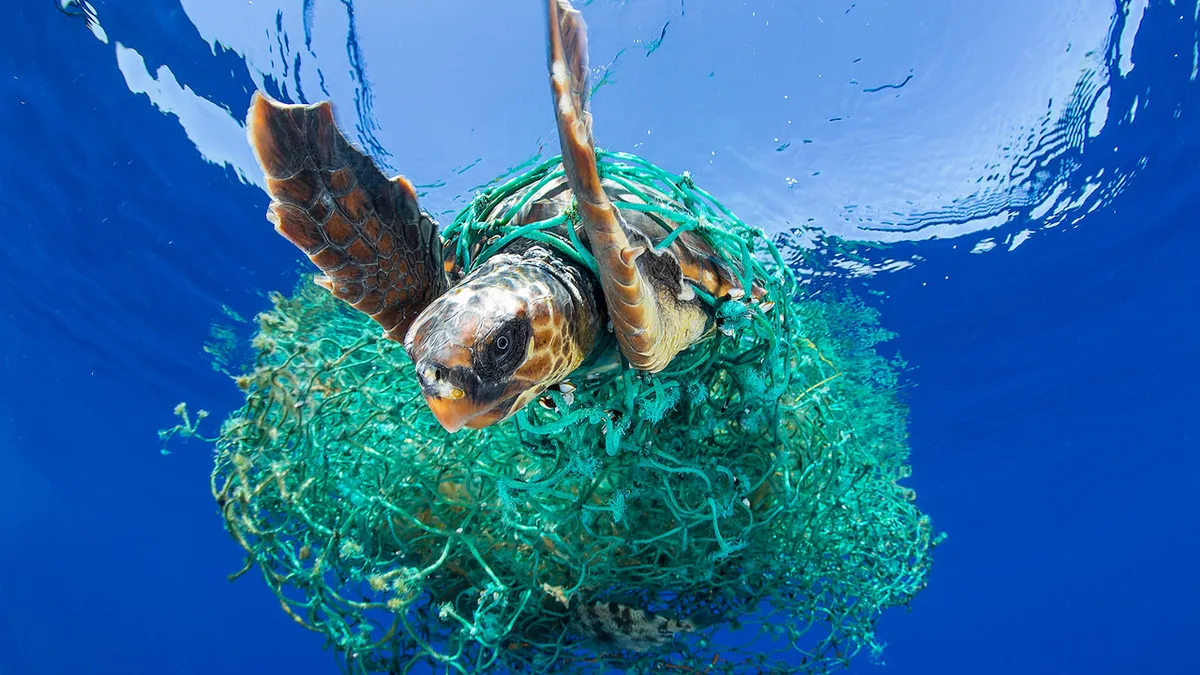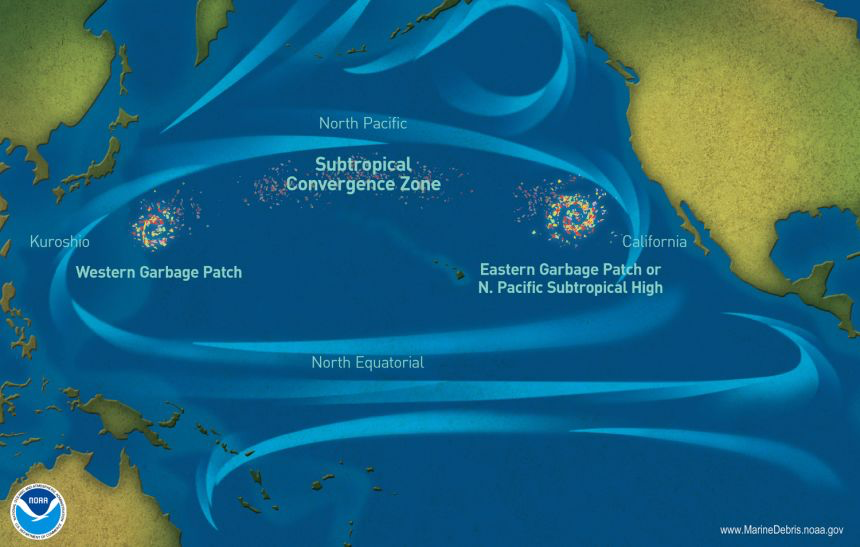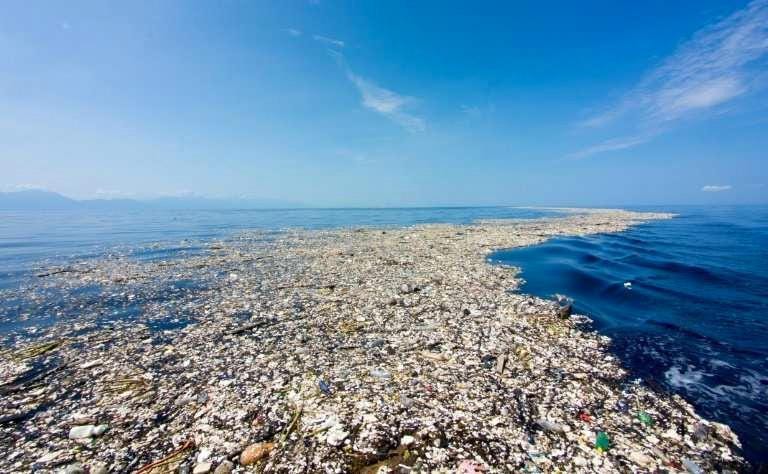Great Pacific Garbage Patch

PC: Francis Perez
IYKYK (If you know, you know). If you don't, this may sound outlandish.
The Great Pacific Garbage Patch (GPGP) is an area of high concentration of marine debris (aka trash) in the North Pacific Ocean. It's estimated to be 2x the size of Texas, or 3x the size of France!
As you may remember from school, the ocean is alive - not only with marine life and organisms - but with its currents and winds. The GPGP spans waters from North America's West Coast to Japan, spinning as a vortex, converging where warmer waters in the South Pacific meet with cooler waters from the Arctic.

PC: NOAA
You may be imagining the GPGP as some undesirable island made up of trash, seen from outerspace. Well, you're not entirely incorrect in that assumption.
Yes, there are tons (literally, tons - maybe even upwards of 80k tons) of plastics and debris floating in this area. One of the main concerns, however, is that the majority of the debris is comprised of plastics. And, plastics have a dark secret: they don't really ever go away. They just keep breaking down into smaller and smaller particles (you may have heard of microplastics before - if not, go check out a prior blog post of mine about them).
 PC: The Ocean Cleanup
PC: The Ocean Cleanup
So, even though a lot of the GPGP is actually seen with the naked eye, it's like an iceberg in a way, where the magnitude of the GPBP cannot be fully seen or comprehended as a result of the volume of microplastics. The breakdown of plastics cause a "soupy" look on the surface of the ocean, while the particles continue to sink below the surface of the water, making their way down to the ocean floor in time.
If the idea of a huge patch of garbage floating off the shores of California, Hawaii, and Japan isn't worrisome enough, there are several other causes for concerns.
First, is our obvious pollution and consumerism problem. We humans are somewhat addicts to plastics and "things." In a research study of the GPGP, researchers found that 99.9% of the 1,136,145 pieces and 668 kg kg of floating debris collected during the study was actually plastic. 80% of the plastic in the ocean is estimated to come from land - that means the things we use and throw away.
Second, the marine and biodiversity impact is sobering and tear-inducing. Marine life can get entangled in plastic fishing nets; sea turtles may mistake plastic bags as jellyfish, ingesting them; sea birds may mistakenly feed their chicks plastic pellets that they think are fish eggs; and the list goes exhaustingly on. Every organism in the ocean plays an important role to the overall balance and health of the ocean. If the ocean gets out of whack, so does dry land (and that means humans are at risk).
Third, if the degradation of marine life (and their death) is still not sobering enough, these microplastics make their way back into humans. As humans (over)fish and consume fish, the plastics ingested by the fish make their way into us, as the plastics seep into the entire aspect of the fish. Just like the marine life, the plastics also seep into our own bloodstreams. Research is still being conducted on the many negative health impacts this is having on us.
So, what do we do?
Unfortunately, as the GPGP is located in between countries, no one is truly willing to take ownership and invest in the cleanup - HUGE debbie-downer here. But, there are various groups that are attempting to clean up this area on their own.
And, you can do A LOT from wherever you are located! We are all connected and impacted by the same planetary issues, even if they appear to be located on the other side of the world. Ultimately, if 80% of the plastics in the GPGP is from land, that means we need to stop the issue upstream.
You can:
1) Reduce your consumption of materials that are made of plastic
2) Buy secondhand
3) Sign up for trash/litter pick-up in your neighborhood or beach cleanups
4) Recycle
5) Vote with your dollars
6) Inspire and encourage others to take action.
Individually and together we can make waves and make an impact. For you, your family, your community, our world, and our future.
for the love of the world + all on it.
x o, rachel
Sources:
Great Pacific Garbage Patch. 2022. National Geographic. https://education.nationalgeographic.org/resource/great-pacific-garbage-patch
Lebreton et. al. 2018. Scientific Reports. https://www.nature.com/articles/s41598-018-22939-w
Snowden. 2019. Forbes. https://www.forbes.com/sites/scottsnowden/2019/05/30/300-mile-swim-through-the-great-pacific-garbage-patch-will-collect-data-on-plastic-pollution/?sh=5ca6fe8a489f
The Great Pacific Garbage Patch. 2022. The Ocean Cleanup. https://theoceancleanup.com/great-pacific-garbage-patch/
